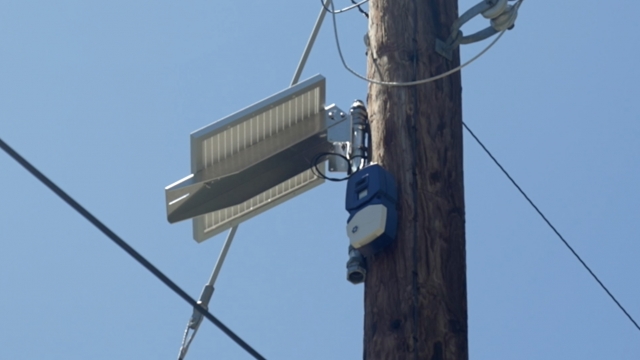Amid the evergreens of the Rockies lies Gilpin County, Colorado, a rural, 150-square-mile county that is home to nearly 6,000 people.
"It ranges anywhere from about 6,000 to 9,000 feet in elevation," said Nathan Whittington, Gilpin County's emergency management director. "It is very mountainous, very inclined; a lot of trees, a lot of rocks, a lot of dirt roads."
It also has limited communications.
"As high as we are in elevation and with our topographical challenges, we have limited to no cell service," Whittington said. "So, even in the site we're standing right now, cell phones don't work."
Every summer, the wildfire risk rises exponentially, which presents a potential problem for first responders in trying to pinpoint a fire location before it gets out of control.
That is where a new type of wildfire sensor comes in.
"If these sensors pick up any kind of smoke, any kind of heat — even with no cell signal — these sensors are able to give us that information," Whittington said. "It allows us to understand what's going on in the backcountry before a fire becomes a raging wildfire and start evacuations early."
SEE MORE: Fire researchers are highlighting the human role in wildfires
The wildfire sensors in use in Gilpin County come from N5 Sensors, a company based in Rockville, Maryland.
"We are seeing the demand is skyrocketing," said CEO Abhishek Motayed.
The company began working on the sensors several years ago, when an agency within the Department of Homeland Security was looking for new technology that could detect disasters, like fires or floods.
"Most of us people, we kind of perceive a hazard using all of our senses: We see it, we could smell it, we could see the smoke, feel the heat," Motayed said. "It's the exact same way" with the sensors, he said.
The sensors are solar-powered and send collected data through either cell service or, in the case of rural areas, through satellite signals. The sensors sit mounted on poles and can detect things like smoke particles and unusual heat signatures. On average, one sensor is set up every 2 square miles.
"The power of this technology is not in one sensor," Motayed said. "It's the network you provide."
Then, artificial intelligence steps in, by computing all of the data gathered by the company's network of sensors, such as particulates in the air, along with weather data like wind speed and temperature.
All of that information helps the network of sensors pinpoint the location of a fire — even if it is a mile away — and then sends an alert with specific coordinates of where the fire is located.
SEE MORE: Allstate stops issuing property insurance policies in California
"After the AI in the cloud detects and makes the decision, with high confidence, that there is a fire in this community, it actually sends out an automatic text or email notification to the registered customers. That could be your local fire department, that could be your local utility, whoever purchased and installed the system," Motayed said.
These sensors are currently deployed in communities in 10 states, from California to Virginia and parts of Canada.
And the cost?
"One sensor is like the price of an average smartphone," Motayed said.
Whittington, the county emergency manager, said the cost is worth it.
"We've already partnered with some of our utility companies up here, so they're installing the sensors on their power poles, outside of what the county is doing," he said.
It is a preparation that comes as they cast a wary eye on this year's wildfire season.
"As we've seen over the past couple of years, the changes in our mountainous communities, it just takes one small wildfire to become a very large wildfire," Whittington said. "The hope is that we can get early detection."
Trending stories at Scrippsnews.com





